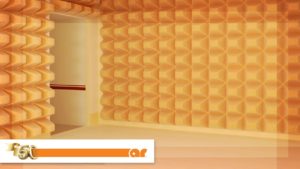Introduction To start at the very beginning, what is an electrical filter? An electrical filter can be passive, active, analog, or digital. It is a device usually composed of discrete components which can be placed between circuits, networks, or equipment/systems to either emphasize, de-emphasize or control the frequency components of a desired or undesired signal. The term … [Read more...]
Software-Defined Analog Filters to Modernize and Improve Radio Filters
Filters are some of the most common components found in wireless system designs. They are typically used to block interference from various sources. As limited spectrum resources are allocated to ever increasing number of users, more conflicts between these users arise and more filters are constantly needed. Nowadays, interference is quite common between cellular base stations, … [Read more...]
Review of MIL-STD 704 Requirements
Introduction This article discusses the power quality test and evaluation with a review of MIL-STD-704 and the relationship with electromagnetic compatibility (EMC). MIL-STD-704 deals with aircraft electric power characteristics, and provides the standard to ensure compatibility between the aircraft power system (including external power) and the utilization … [Read more...]
Cable Discharge Event (CDE)
Abstract Worst-case Cable Discharge Events (CDE) are poorly understood by most of the product developers as the definition of what is about to happen when you plug in a cable into an appliance’s socket. It is NOT the electro-static charge which could be expected on the cable: outer/inner shield(s) + internal wires, while the cable is fully floating prior to the cable … [Read more...]
Conformal Conductive Coating and EMI Shielding
This is a diverse and promising space. In one manifestation, spray-on inks are targeting package-level EMI shielding. Here, they hope to displace sputtering, the incumbent, which benefits from sunk CapEx and lower material consumption costs. They offer low CapEx production in atmospheric conditions and better conformal coverage. Others are developing inkjet printing solutions, … [Read more...]
Review of MIL-STD-464 Requirements
Introduction My reviews have covered MIL-STD-461 over the past few months so it’s time to step up to the system requirements. We realize that the MIL-STD-461 requirements apply to equipment items and subsystems as stated in MIL-STD-464. Revision “C” is the current edition, but a review is a little overdue. In this review, the discussion will focus on the various requirements … [Read more...]
Specifying RF/Microwave Power Amplifiers for EMC Testing – Final Factors to Consider
This is the final installment of AR’s blog series “Specifying RF/Microwave Power Amplifiers for EMC Testing.” The full series can be viewed here. TRANSISTOR The transistors used in the amplifier are a main component of the amplifier and can provide hints about the design and provide you with another data point in your purchasing decision. Some manufacturers have been … [Read more...]
Review of MIL-STD-461 General Requirements
Introduction Recently I noted that my series on MIL-STD-461 test methods was closing since I had accomplished a review on each of the test methods. It seems appropriate to continue with a review of General Requirements – those things common to the various test methods. These requirements have been around since the first release of MIL-STD-461 and MIL-STD-462 dealing with … [Read more...]
Specifying RF/Microwave Power Amplifiers for EMC Testing – Amplifier Control
This is post 4 of AR’s blog series “Specifying RF/Microwave Power Amplifiers for EMC Testing.” The full series can be viewed here. EMBEDDED AMPLIFIER CONTROL For years, amplifier control has been limited to manual operation and remote control through a communications bus. With ever-changing technology, a third type of amplifier control has emerged. Now, many amplifiers … [Read more...]
Basics of Passive Filters for EMC Compliance
INTRODUCTION One of the roles of the practicing EMC engineer or product designer is to be able to design filters to add to circuits in order to get them to pass various EMC immunity and emissions standards such as IEC 61000-4-2 for ESD immunity, IEC 61000-4-3 for Radiated RF immunity and IEC 61000-4-4 for Electrical Fast Transient/Burst immunity and other various … [Read more...]
- « Previous Page
- 1
- 2
- 3
- 4
- 5
- 6
- …
- 16
- Next Page »














